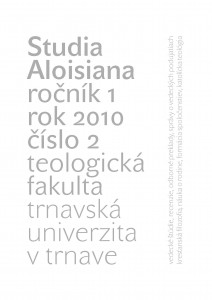Viera a kultúra koptských a etiópskych kresťanov v historickom kontexte
The Faith and Culture of Coptic and Ethiopian Christians in Historical Context
Author(s): Andrej SlodičkaSubject(s): History of Church(es), Ancient World, Middle Ages, Eastern Orthodoxy
Published by: Teologická fakulta Trnavskej univerzity
Keywords: Church in Egypt; Church of Ethiopia; Council of Chalcedon in 451;
Summary/Abstract: The foundation of the Church in Egypt is closely associated with St. Mark the Evangelist. But the christological teachings of the Council of Chalcedon in 451, partially because of opposition to Byzantine domination, were rejected by much of the Egyptian hierarchy and faithful. Location: Egypt and diaspora in Europe, Africa, Australia, the Americas. Title of head: Pope of Alexandria, Patriach of the See of St. Mark; residence: Cairo, Egypt. According to an ancient tradition, the first great evangelizer of the Ethiopians was St. Frumentius, a Roman citizen from Tyre. The Church of Ethiopia is unique in retaining several Jewish practices such as circumcision and the observance of dietary laws and Saturday as well as Sunday sabath. The Ethiopian liturgy is of Alexandrian (Coptic) origin and influenced by the Syriac tradition. Location: Ethiopia, small diaspora. Title of the head: Patriarch of the Ethiopian Orthodox Church. Residence: Addis Ababa, Ethiopia. Membership: 16 000 000.
Journal: Studia Aloisiana
- Issue Year: 1/2010
- Issue No: 2
- Page Range: 39-65
- Page Count: 27
- Language: Slovak

